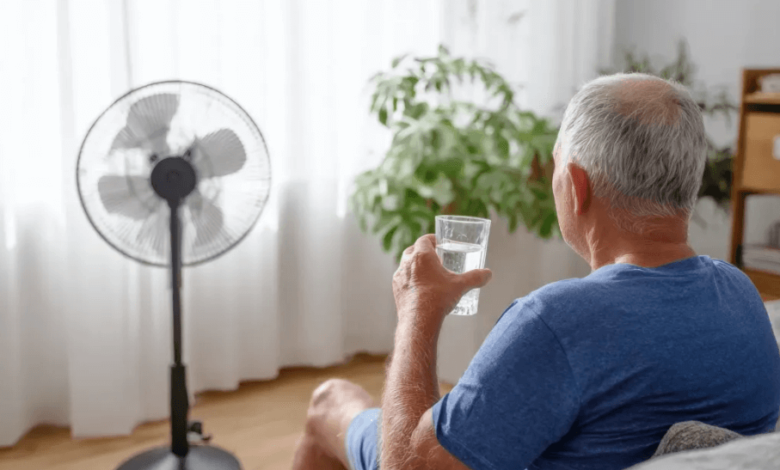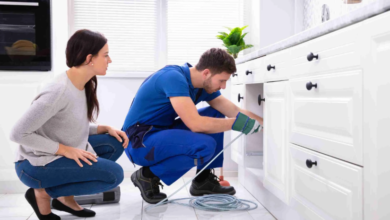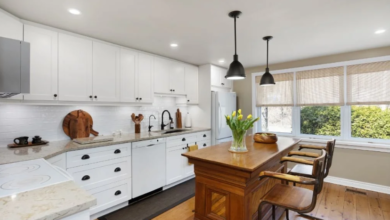Should the AC Stay on When the Home Is Unoccupied?

Whether the AC should remain on when a home is unoccupied depends on factors such as energy efficiency, climate, and overall comfort. Keeping it on at a higher temperature can help prevent excess humidity and protect belongings in hot or humid regions. Homeowners can also consider efficient cooling solutions from Beltway Air Conditioning & Heating to better manage indoor comfort while saving energy. On the other hand, shutting it off or programming the thermostat to a lower setting can reduce energy costs. A homeowner’s knowledge of their property’s insulation and local weather conditions ultimately determines the most efficient and comfortable choice.
The On vs. Off Dilemma
To leave the air conditioner on or off while away — these are not just the questions of the insomniac nights, but the things that determine energy savings, cost savings, and home protection. These concerns are often entwined, begging for a balance of monetary and pragmatic results.
1. Energy Use
In the short run, switching off air conditioners can save energy; however, it can be more difficult to cool down a space, particularly in a hot environment, once the air conditioners are switched on. Rather than switching them off altogether, it is better to increase the thermostat by several degrees so that they can still cool the space and also conserve energy. The well-insulated houses remain longer, and this takes away the need to use energy when the AC has been turned off. Programmable thermostats are also capable of enhancing efficiency by scheduling cooling automatically.
See also: Bathroom Renovations London Ontario Expert Tips for Modern Upgrades
2. Cost Savings
During the time people are not at home, turning up the thermostat 4–6 °C can save the energy bill considerably without making the house stuffy. Smart thermostats provide accurate regulation so that there is no waste of energy, and the expenses are predictable.
These minor changes with time translate to appreciable savings. Nevertheless, short-term savings must not jeopardize long-run maintenance, as in the case of an overworked AC that is having a hard time cooling an unoccupied house that has been closed for days.
3. Home Protection
Having a regular interior temperature will also allow regulation of humidity to avoid the growth of mold that may spoil walls, furniture, and belongings. Furniture made of wood or structural material can be affected by excessive heat, thus causing deformity or distortion. Maintaining the household environment will provide comfort on returning and guard against the property itself.
4. System Strain
On-and-off cycling causes overload to AC units. Stable operation of the system at average parameters minimizes the wear of compressors, and it also increases the life of the unit. Programmable thermostats can facilitate a change and help to make the process more efficient.
Find the Ideal Away Temperature
In case a home is vacant during the summer seasons, then it is necessary to program the air conditioning unit to an optimal away temperature. Such a balance is efficient in saving energy and damaging the home at the same time. Adjusting a programmable thermostat, depending on how long of an absence and the climate in the area, can save a homeowner money on energy expenses, yet provide a comfortable environment and keep long-term problems at bay.
Short Absences
During short time spans of absence, the thermostat may be adjusted to a warmer, although comfortable temperature, usually being 26 or 28 °C (78 or 82°F). One should not switch the system off since cooling down a house that is at very high temperatures exerts undue strain on the AC.
Having curtains or blinds minimizes the direct sunlight that serves to maintain the temperature and minimize the burden on the system. Turning the HVAC off and on also aids circulation of air, which keeps odors and the growth of molds in damp climates.
Long Vacations
When away for long periods of time, the thermostat should be regulated to 29 – 32 °C (8490F). Smart thermostats have Vacation Mode and Remote Access that enable homeowners to maintain consistency in temperatures and modify settings using a phone or computer. Humidity is also controlled by these systems and lowers the chances of mold. It is advisable to have HVAC maintenance and change filters before going away on a long trip so that there is maximum efficiency in their absence.
Why Humidity Matters More
Humidity is a key factor in order to have a healthy and safe indoor environment. Adequate control will not only secure the home structure, but also guard personal items and avoid expensive problems.
Mold Growth
Warm and humid climates promote mold. The higher the temperatures at which the air conditioner operates, the more it can do to limit the level of moisture. The moist environment encourages the growth of mold, so it is important to establish thermostats on dehumidification, smart monitors, and dehumidifiers, in addition to cleaning wet spaces to prevent mold growth. Mold can destroy property, lead to breathing problems, or cause allergies unless it is controlled.
Structural Integrity
Unnecessary moisture may affect the structure of the home in the long run. Furniture, beams, and wooden floors are particularly susceptible to warping, swelling, or rotting. Wall and ceiling cracks can also happen as temperatures and humidity vary. Regular AC power use and proper ventilation lessen these dangers and maintain the materials and finishes of the home.
Personal Belongings
The impact of prolonged exposure to moisture can be on electronics, clothes, upholstery, and even paper materials. Electronics can become corroded, clothes can be mildewed, and the papers can become musty. Saving valuables in climate-controlled areas offers protection and the usage of the AC system to avoid destructive environmental changes. For extended absences, more storage protection can be required.
Leverage Smart Technology
It is smart technology that has altered the way homeowners can go about air conditioning, particularly when the houses are empty. Temperature, humidity, and the use of energy can be controlled better using programmable thermostats and other gadgets.
Remote Control
Smart thermostats enable the owners of the homes to control the setup of the thermostats with the help of a smartphone. Cooling can be reduced to a few taps and thus avoid wastage of energy, which would have otherwise been wasted as a result of alteration of the AC before departure. Such devices also enable pre-cooling of homes before the family gets back home, thus, the comfort is guaranteed instantly.
A remote control can also assist homeowners in checking and controlling the use of energy when they are absent for longer periods. A rapid check will give an understanding of the efficiency of the system, and the real-time adjustments will allow controlling the sudden weather changes without either overcooling or overheating.
Geofencing
Geofencing is a further automation that uses the location of the homeowner to adjust the thermostat. If there is no one at home, e.g., it can automatically reduce cooling, conserve energy. When residents arrive, the AC can be used to turn on and cool the house before they enter it, and they are actually cool without them having to take a single step.
This capability works together with other intelligent appliances, including lights or security systems, to establish a unified smart home impression. As a case in point, cooling and lighting can be turned on simultaneously as a result of geofencing, making it easier to save on convenience and utility.
Energy Reports
Smart thermostats also include comprehensive energy reports, allowing homeowners to monitor the use trends and detect inefficiencies. These observations present the possibility of further savings, including reducing temperature set points or fixing HVAC problems. Comparisons made every month also indicate the effectiveness of adjustments.
These reports help homeowners know when to upgrade systems so that decisions are made on the basis of data and long-term efficiency.
Finding the Balance: Energy Savings vs. Comfort
It is not universal to leave the AC on when one is away. The most appropriate solution will be based on the climate, insulation, and comfort choices. Professionals advise that the thermostat should be turned to a higher temperature instead of switching it off. This method controls humidity, shields the house, and cuts costs to the unit. The implementation of smart thermostats makes it easier, as they automatically regulate settings.
By combining consistent maintenance, smart technology, and efficient cooling strategies, homeowners can maximize both comfort and savings. With a little foresight, the AC can operate intelligently—working smart, not hard.




